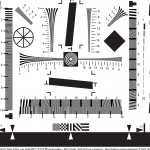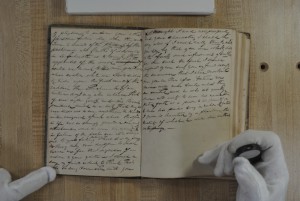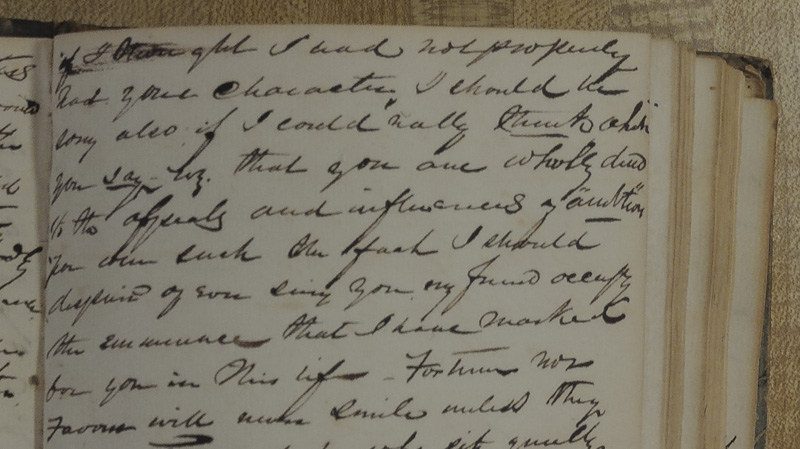One of my main volunteer tasks at the Historical Society of Frederick County is photographing historic pictures and documents. You can find many of pictures I have copied in the Online Catalog on the HSFC web site. I have done this for a several years using my Nikon D70, but have now started using my new Nikon 1 V1. My current project is photographing account and day books from the new “Auburn Farm Books and Catoctin Furnace Ledger” collection. Some material dates back to 1811; most are daily records from the eighteen sixties.
Camera Set Up
I mount the camera on HSFC’s Bogen TC-1 Copy Stand, which provides about 20″ of copy surface, a nice uniform light, and a very stable camera mount. I use a remote to snap the photos to avoid mechanical shake. With the D70, I use the Adobe Camera Control Pro. I don’t know of any remote control software for the Nikon 1 (hopefully there will be one in the future). Instead, I use the remote control “clicker” accessory.
I start by positioning the camera, lights, and material on the copy stand and put a grey card on top of the material. I then set the “White balance” to the “Preset manual” option. I select this option and choose to “Measure a new value”. I follow the prompt and take a closeup photo. This appears to do a good job of color correction.
I set up the camera to get a sharp focus on a test pattern. The pattern I use is the focus target in the ISO 12233 resolution measurement chart. I printed a homemade version of the chart as follows: I opened the downloaded PDF file in Photoshop Elements 9, chose to rasterize the image at 1200 pixels per inch, and printed the chart at high resolution on my Epson printer.
I set the “Exposure mode” to “Aperture-priority auto” and set the aperture wide open to increase the focus sensitivity. Then I follow this procedure:
- Replace the grey card with the test pattern with the focus target in the center of the frame.
- The procedure was simple with the D70, I simply auto focused on the target and switched to manual mode to lock in focus.
- With the Nikon 1 V1, I push the bottom (AF) side of the multifunction button on the camera and set the “Focus Mode” to “AF-S” using the multifunction button.
- I then focus and shoot the test pattern. This gives a very sharp focus.
- Right now I have a problem reliably locking in the focus during the production phase. Unfortunately there is no numeric readout of the focus setting, which would replace the D70 focus ring setting. Adding a numeric reading would make it easier to control the setting.
- I leave the focus setting where it is during production and have gotten excellent results. On occasion, I lose auto focus and have to re-focus on the test pattern.
Because I need a good depth of field when photographing these bound documents, I adjust the aperture to about F9. For quality control purposes, I take photos of the test pattern and the grey card and keep them with the production photos.
Production
The Nikon 1 V1 is a bit harder to set up then the D70, but really came into its own during the production stage. The image is about 3800 x 2600 pixels compared to 3000 x 2000 pixels for the D70. For a 12″ wide document this gives a resolution of about 310 pixels per inch which is adequate for reading the content.
This is a photograph of a small notebook from the collection. According to the notes with the collection, it contains Law School notes dating back to the 1830’s. It is clear that the writer used every inch of space.
Photographing the material has an advantage over scanning because the material can be kept face up. Also since the photograph has a substantial depth of field, there is no need to try to flatten the material against the glass of a scanner. After some trial and error, I decided that the best page holding device is my finger as shown in the photo. When a page is properly positioned, I use the remote control “clicker”, shown in my right hand, to take the photograph. I set the “Self-timer” control on the camera to the Remote “2s” setting. This gives a 2 second delay after I press the remote button to make any final adjustments. With this method, I can work faster than I could with the computer controlled D70. Working by myself, I was able to photograph between three and five pages a minute.
Post Processing
I insert the memory card into the memory card slot on my computer and copy the images to an external hard disk using Photo Mechanic. Photo Mechanic can rename the files (I use the “{datesort}-{seqn}-Tag” format to make the names date sortable) and insert captions, titles, and other metadata. I use Lightroom 3 to process the images. I had to upgrade to version 3.6, which supports the Nikon 1. I think that Lightroom does an outstanding job of sharpening images. I over-sharpened the images a bit for this project because I want to enhance the handwriting. I use the following Lightroom Sharpening settings: Amount: 102; Radius: 1.0; Detail: 11; and Masking:36.
Result
The next photo shows close up of the earlier image after post processing.



